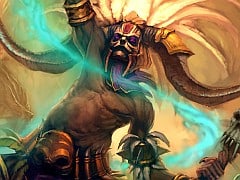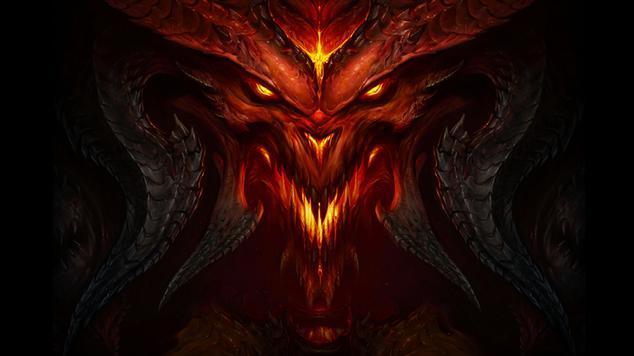You can trust VideoGamer. Our team of gaming experts spend hours testing and reviewing the latest games, to ensure you're reading the most comprehensive guide possible. Rest assured, all imagery and advice is unique and original. Check out how we test and review games here
The Diablo III beta is still a fairly limited snapshot of what’s to come. A trigger-happy user can blitz through its first act – the only one available – in a little under an hour and a half, showing if anything Blizzard has worked out the art of brevity. By the end of the beta you’ll have likely reached level nine, with a small clutch of quests and abilities, an introduction to the nostalgic home-hub of New Tristram, and one boss battle in the form of the Skeleton King under your belt before the game thanks you for your time and shows itself the door.
Ignoring the limited playthrough, the success of Act I lies with just how much it still conveys. That old “don’t judge books by covers” adage can be roughly translated as “don’t judge games by demos” in this industry, and needless to say the beta is just a fraction of the final product due out next year – but even without a multi-hour play session, the changes since the last time we saw the series are still deeply apparent.
Blizzard’s new engine drags Diablo from the depths of last-millennia graphics, and the studio has decided to move on from the darker, gothic tendencies of the earlier games’ art style for a bolder Warcraft-influenced direction – something 64 thousand or so users have actually petitioned against in a plight to protect the original sensibilities of the franchise. Everybody’s a critic. The result, as the beta shows, is a colourful sort of macabre. Blue-green environmental lighting, the odd exaggerated weapon or attack, Diablo III re-interprets the Diablo aesthetic with a few more stylised gestures.
So welcome to New Tristram, built out of the wreckage of Diablo’s original Tristram. Unfortunately for its denizens, a meteor has hit the old cathedral and raised an army of dead ruled by the Skeleton King, whom older players should remember from the original game. The first few quests snake into the lower, randomly-generated depths of the Cathedral, beginning with a rescue mission to save series stalwart Deckard Cain, then further tasks you to summon and kill Act I’s final boss.
Users have access to all five playable classes. The Barbarian, Monk, Wizard, Witch Doctor, and Demon Hunter are available in both gender types, all of which can be tested in repeat playthroughs of the first act.
Each class has six active skill slots and three passive abilities, the former of which you can customise with special Runestones – although this wasn’t available in the beta. But even without the Runestones, Blizzard has a very flexible approach to letting users can develop their character’s combat style.
Skill-based special abilities are combined with spammable attacks, adding further possibilities for defensive and crowd-control strategies to the Diablo’s typical hacking and slashing. These will unlock as you level, starting off with two and growing to six by level 24, however at no point are users locked in to the abilities they have already chosen. You can experiment with all available abilities at any point in the game, swapping them in and out of slots at will. A Witch Doctor might spend his first eight levels relying only on an ability that releases plagues of toads on victims, for example, before deciding to change his tactic entirely by summoning a Gargantuan, a giant zombie, to fight for him instead. With no cost to changing your skill set, it’s possible to try a different configuration for literally every fight, and even develop different tactical styles on the fly depending on the enemy-type, if you’re so inclined.
A relatively destructible environment gives way to a new manner of using the 3D environment, too. Enemies will use the full space available, crawling up the sides of walls from a lower depth to enter the combat area, for example. But the destructible elements offer another way to fight foes. Chandeliers can be broken down and used as weapons to crush enemies loitering directly underneath. The same can be said for certain sections of wall which you can use as crushing devices with one hit, causing it to collapse forward . When timed, right it’s wonderfully effective.
As with Diablo II you can make use of hirelings, customisable AI henchmen that can be invited to join your character to fight mobs and – in the case of the beta – the Skeleton King. Less customisable than your own class, the Templar knight hireling can be given weapons, a limited set of armour, and have his abilities chosen for him, which suggests you’ll be developing your own perfectly effective AI companion in later acts. Also hinted at, but not fully demonstrated, is the importance of crafting artisans who can sell you weapons and armour, and create pieces based on materials you have given him.
There is still a lot to be shown, but the beta gives the impression that Blizzard has had a watchful eye on the changing needs of players since the last time Diablo hit retail. The game is going to enter a new market of modern dungeon crawlers, many of which have spent the last decade genuflecting at the series’ altar – even outright miming it – but it’s outdone them by homing in on that desire for ubiquitous customisation.
Diablo III
- Platform(s): macOS, Nintendo Switch, PC, PlayStation 3, PlayStation 4, PlayStation 5, Xbox 360, Xbox One, Xbox Series S/X
- Genre(s): Action, RPG

/https://oimg.videogamer.com/images/61e5/diablo_3_5.jpg)






